You Don’t Need Much . . .
. . . and you don’t need to spend too much either!
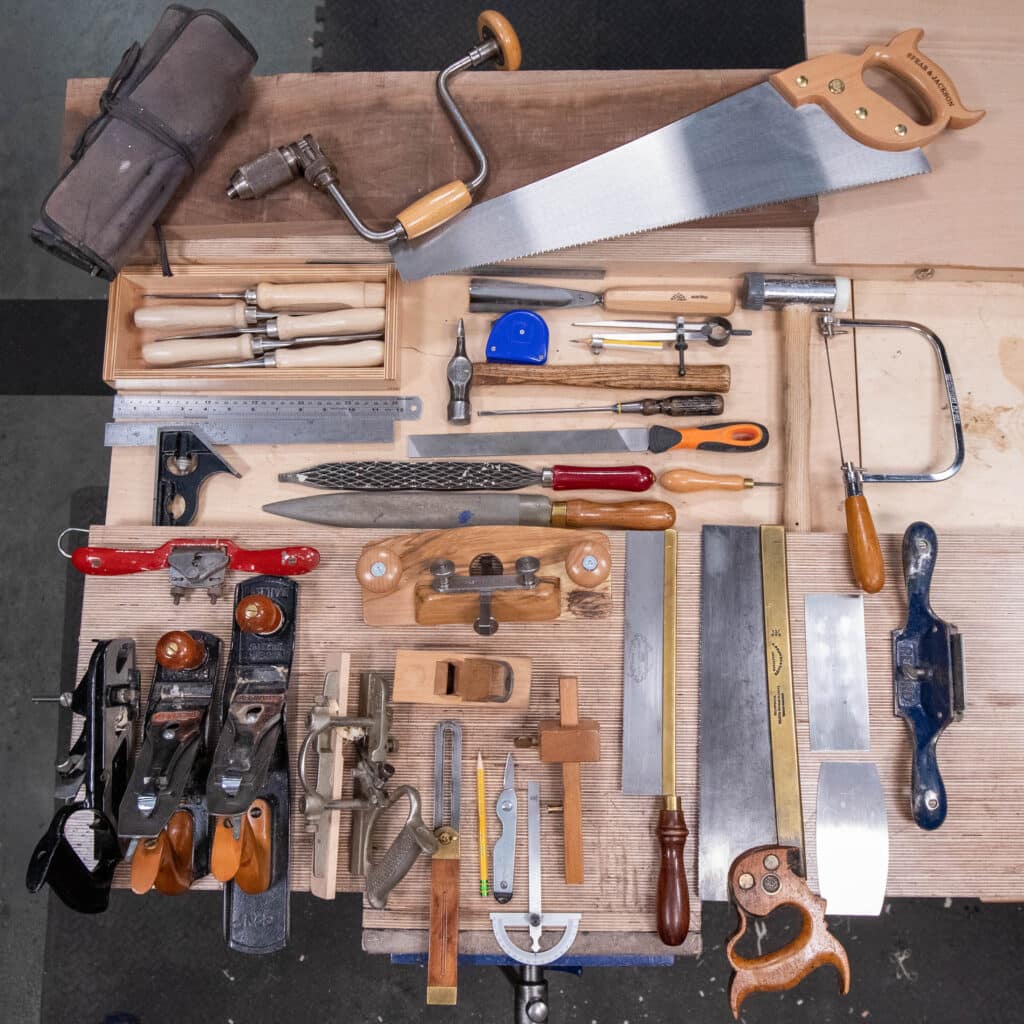
I have pulled this together to steer those who might think a £200 plane or saw or a set of chisels of similar cost is the only way to go or even the best way to go. But a little sweat-equity (investment of your own labour) might just give you more than financial savings as you get to know and thereby understand your newly acquired tools in an hour or so of minor or even major fettling at the bench when they arrive. The standard no frills #4 Stanley or Record bench plane is the best example. Stripping one down and derusting, adjusting and sharpening can be one of the greatest lessons and the reward is a plane that works as well if not better than any premiom version and a Clifton or Lie Nielsen #4 plane costs between £380––£440 here in the UK. A Veritas is £340 so none of them are low cost at all but perhaps tp some more preferential than a necessity. Another issue is the weight of these planes. Not good at all. Not a bonus value anyway.
Watch for the misinformation too: Here is a passage taken from one UK site ––”These planes are ready to use from the box and do not need hours of flattening and fettling to make them fit for use.” It usually takes me about 15 minutes to flatten a bad sole of a plane and the sides do not, NOT, need flattening and squaring to the sole, ever. Remember these are salespeople and not crafting artisans
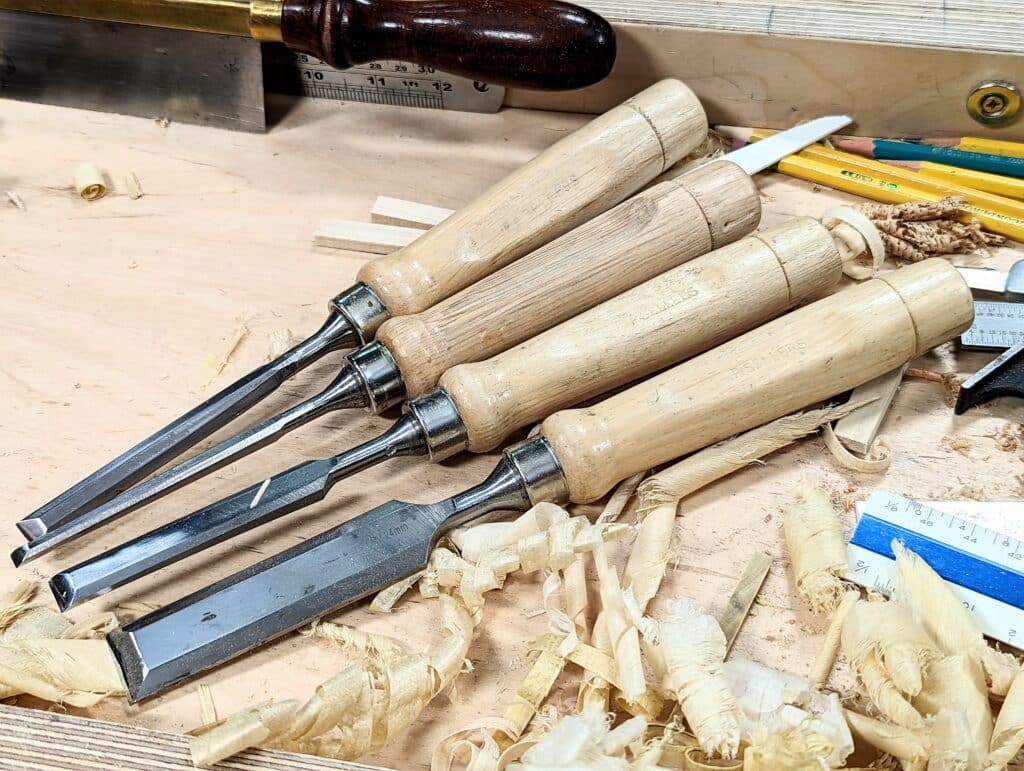
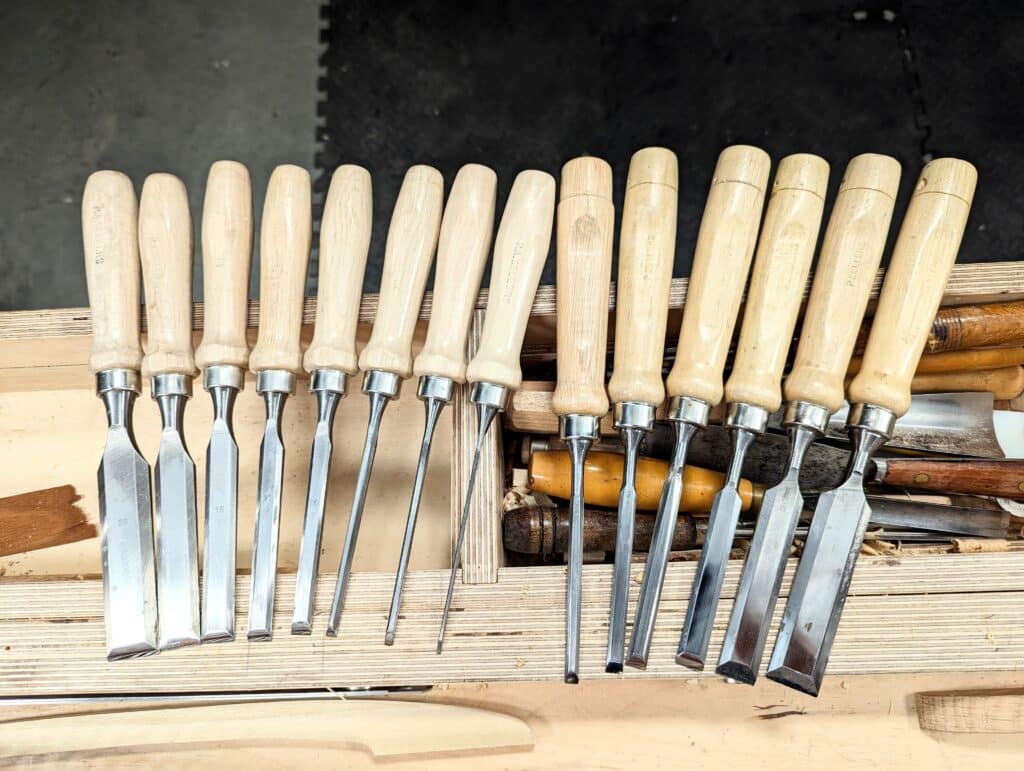
I think often about the price of tools and the perceptions people have about, “Well, you get what you pay for.” and, “Buy the very best you can afford.” I understand the precept and indeed grew up with the prevailing negative attitude when the birth of plastics and the exporting and importing of goods made then in Asia was emerging. What was produced in the 1950s and 1960s was extremely low-grade and low-quality goods of every kind and though such things do still exist, running parallel is also some of the finest of manufacturing too. In my day I recall buying a set of carving chisels as a young boy of 10 that refused to cut and buckled with every cut I made into the wood. I think those days seem mostly to have gone and that those early cheap goods paid for the developed Asia we know today where quality often equals or surpasses our present-day domestically made goods. The right and wrong of it I really don’t altogether know. I would like to think that some elements of making domestic goods can reestablish themselves. My router plane kit with the cutting irons made in Sheffield by an old and established company was our attempt to support tool makers here in the UK
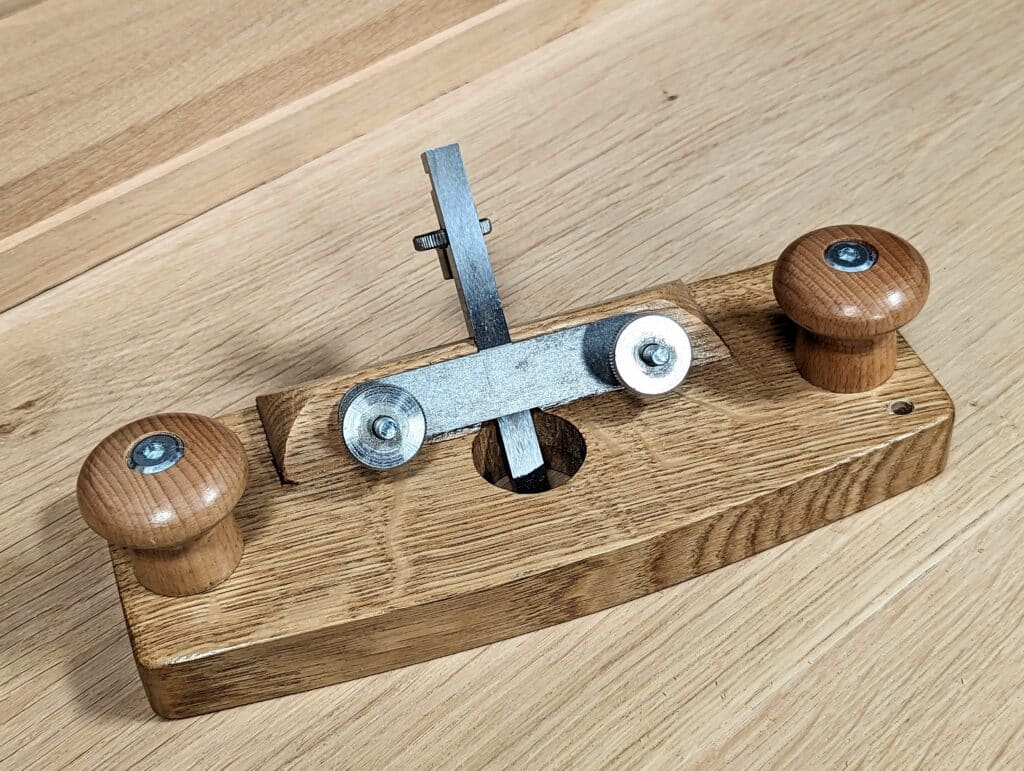
My last book, Essential Woodworking Hand Tools, is the same. We invested ourselves in it––crafted what we wanted into the pages in the same way we craft our woodworking projects to the best of our ability. The paper is specially made in Italy and the book itself, Smith sewn, hardback, cloth bound and full colour is published and printed about an hour’s drive from Oxford where I live and work.
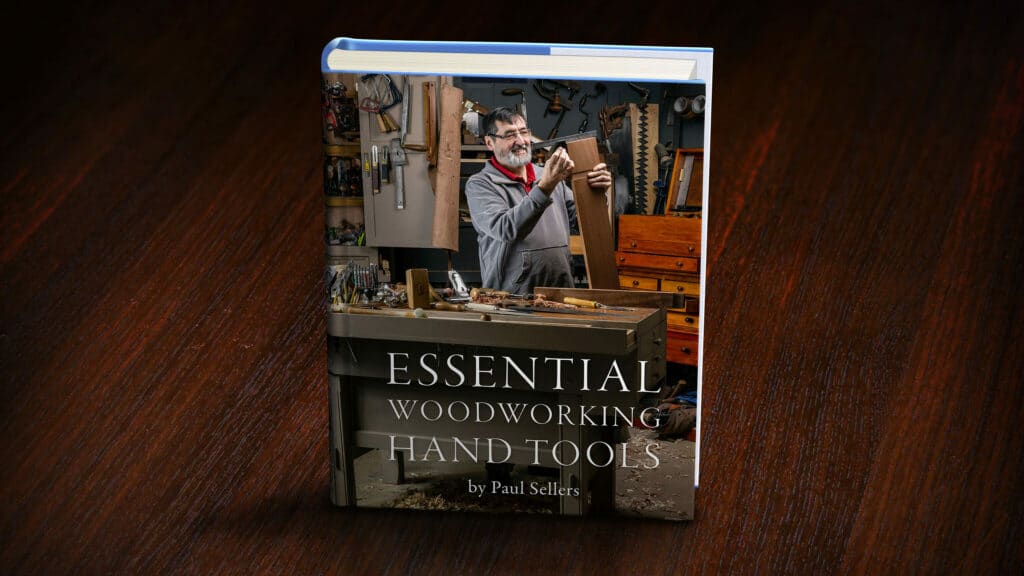
I’m often told that we should buy the best tools we can afford and that long term they will pay for themselves. Well, I might agree with that but often the prices become prohibitive for most woodworkers approaching the craft of hand-tool woodworking as beginners. Imagine spending £250 pounds on a hand plane when you don’t even know if you will like this way of working wood. The same goes for chisels costing £525 for a set of five. The two chisels I’ve seen snapped in two were both from premium makers yet my £2 chisels, the ones you’ve seen me use above for over a decade to date, have never snapped. We even installed them on the woodworking school workbenches and we still have them as full sets. The supplier, Aldi Supermarkets, stopped selling them a few years ago. The ones they sold then had hornbeam handles, the absolute supreme wood for chisel handles: unflinchingly solid, smooth to the hand and unsplittable. Once I determined that I really did like them and that they were durable, I tweaked them by removing the totally unnecessary and inappropriate steel end caps that did absolutely nothing but cheapen the look of them and reshaped the handles in a very minor way to take out the step from the hoop. As it is with all good things Aldi, they stopped selling them after a few years. So I have been trialling MHG chisels in the sets sold and my findings and experience have been positively good. I am never too sure why makers insist on making chisels with bulbous handles or from ash and then calling them premium when in actuality both are more a downgrade from the longer, more slender handle form and the ash is not as good a wood choice as hornbeam. That out of the way, the MHG six-chisel set with the less polished surfaces (still great in the hand) is very comfortable to handle and the hornbeam handles provide for a truly well-balanced lifetime chisel all around. As I said, if I had a choice, all chisel handles would be made from hornbeam. The set I recommend anyone can enjoy is the set of six but I then add in their 2mm and 4mm chisels to increase the flexibility with narrower chisels often helpful and used in joinery and other woodworking like inlay work. The six-set costs €74 so around €12 per chisel and this is excellent value for money if you consider them to be a lifetime tool. Here is the link to the ones I have been using in recent years. Look around their site for the added sizes you might need to complement your set. That said, you can buy the commonest sizes individually and so customise your set according to preference. Most of us got by with four chisel sizes for decades. 1/4″, 1/2″, 3/4″ and 1″. £50 is a lot easier on the opening costs and they are still lifetime tools, no question.
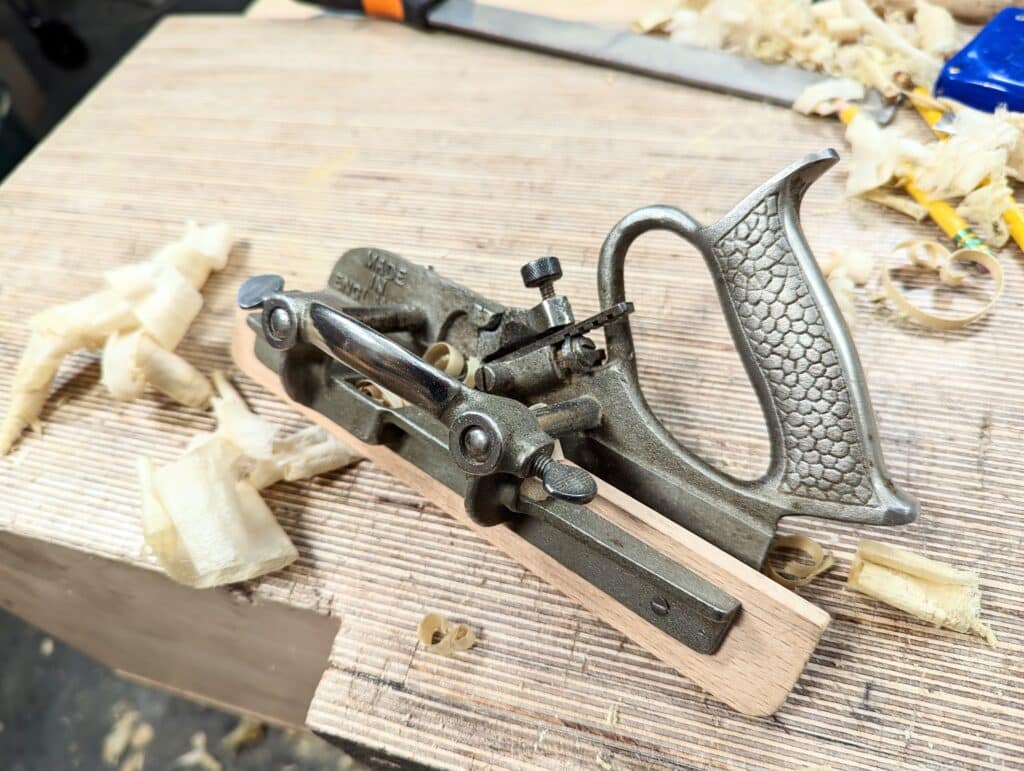
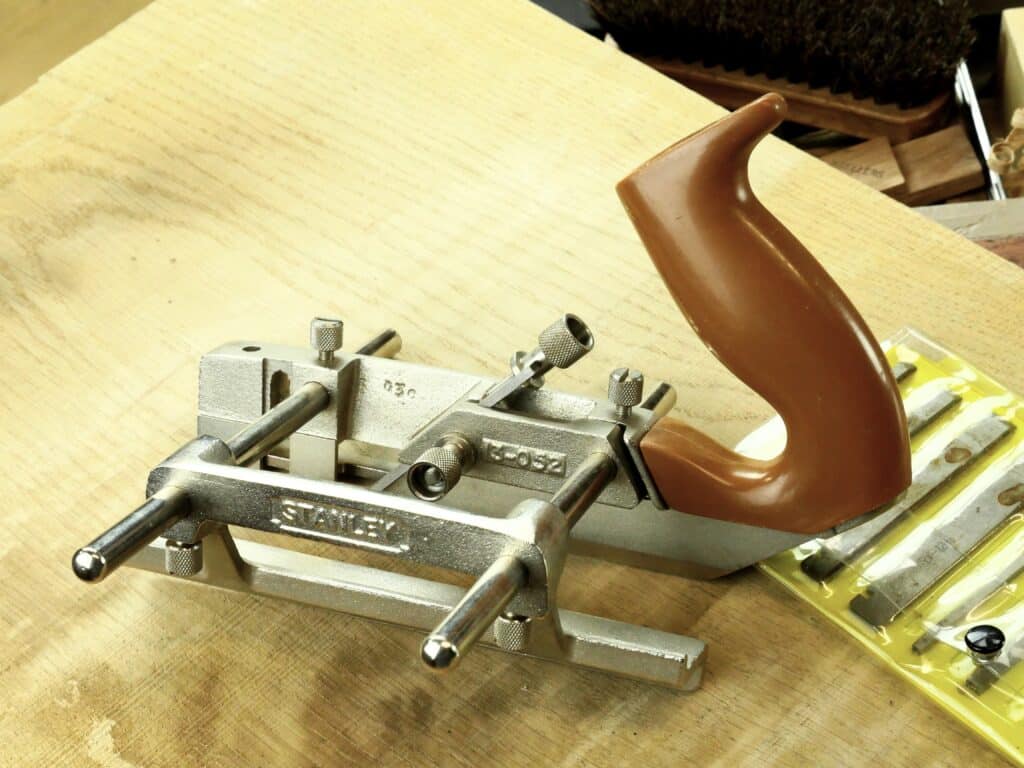
Well, anyway, I ploughed a groove in some wood for my drawers and made a very short 30-second video on my phone so that I could encourage others to at least consider a plough plane for some of their work. It was favourably received by a few thousand people (actually 150,000) but for one “professional with 40 years in the trade” deciding to confront me by telling me, “It takes 3 seconds with a power router.” Now my set-up costs me the plough plane at a cost of £10 many decades ago and that can still be had for around £30 with judicious shopping online via eBay, so I am glad for that. Anyway, after a few exchanges trying to help him understand that we weren’t likely to need 10,000 linear feet of grooved wood, I gave up and just ploughed on making grooves in my four sticks for my drawer bottom. To read more on the plough planes, our common woodworking site handles the questions you might not be able to ask and get an answer to.

You’ve watched me through many a dozen if not hundreds of videos reach for a certain saw to cut my shoulder lines and dovetails with. I have three other saws hanging there that are probably worth a few hundred pounds, maybe £500 for the three. They’re old, at least a hundred-plus years old, made by R Groves, my other favourites actually, and that’s why they are so high in value. These are all brass-backed saws and so used mainly for joinery. I have many other saws and the ones comparable in length costing about £120 from so-called premium makers and then some on up from there but these saws remain boxed up. I never use them because my gents saw that cost me under £15 when I bought it still does everything I need but with the most direct punchiness, I love. These others have lovely handles and pristine teeth. Why do I not use them? The handles are the wrong size, too big, too small, not the right angle to the long axis of the saw, the wrong shape and the teeth are just too fine meaning they take forever to cut. The saw I reach for is my Crown 10″ gent’s saw with 17 TPI (definitely do not go for anything with 20 TPI for dovetailing and general joinery no matter what the seller tells you). I have owned mine forever and it’s as good today as it was when I first bought it decades ago. It’s resharpenable, a must for any crafting artisan. Usually, they sell for around £25 but £30 is not too much to pay. Once you’ve bought it, go to my video on sharpening a gents saw. You will need this for the upcoming years.
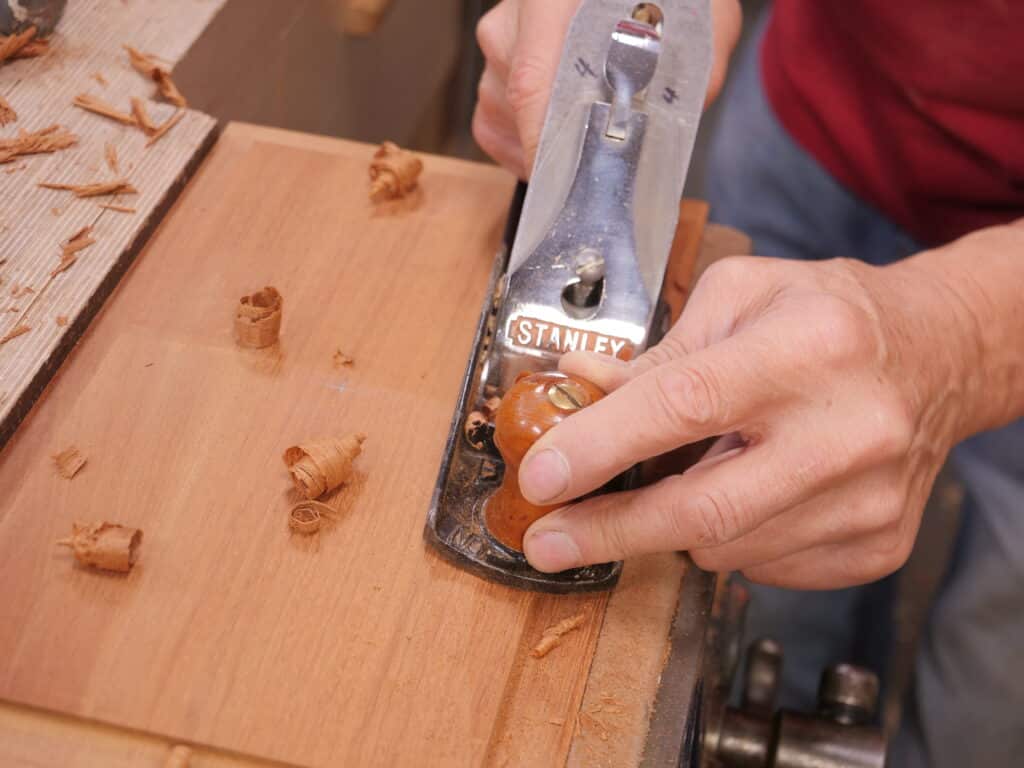
My No. 1 user bench plane is my #4 Stanley. It’s well-proven itself flawlessly as my most faithful smoothing plane followed on quickly by my #5 Stanley jack plane in its longer length. I’ve used them both with no issues for 58 years to date and never had a single issue with either of these or the many a dozen others I have used through three decades of teaching and training and passing them along to others. My two workhorses work interchangeably and for different reasons, work types, etc. I can do everything in planing with a #4, no question. Most of my planes I have picked up for between £10-25 apiece. Here in the UK, they are undervalued, underappreciated and plentiful via sales platforms like eBay. I look for older versions secondhand and not new ones. It’s my belief that you will learn far more and much more quickly about bench planes from buying a secondhand one than you ever will from buying one ready to go in the box. I have covered this too and many videos on our commonwoodworking.com site and then this blog (use the search box top right) and woodworkingmasterclasses.com platform. I think you will be surprised how much work we have done through the years. Oh, and I still find Stanleys for an occasional tenner (£10) in need of TLC but still well worth it.
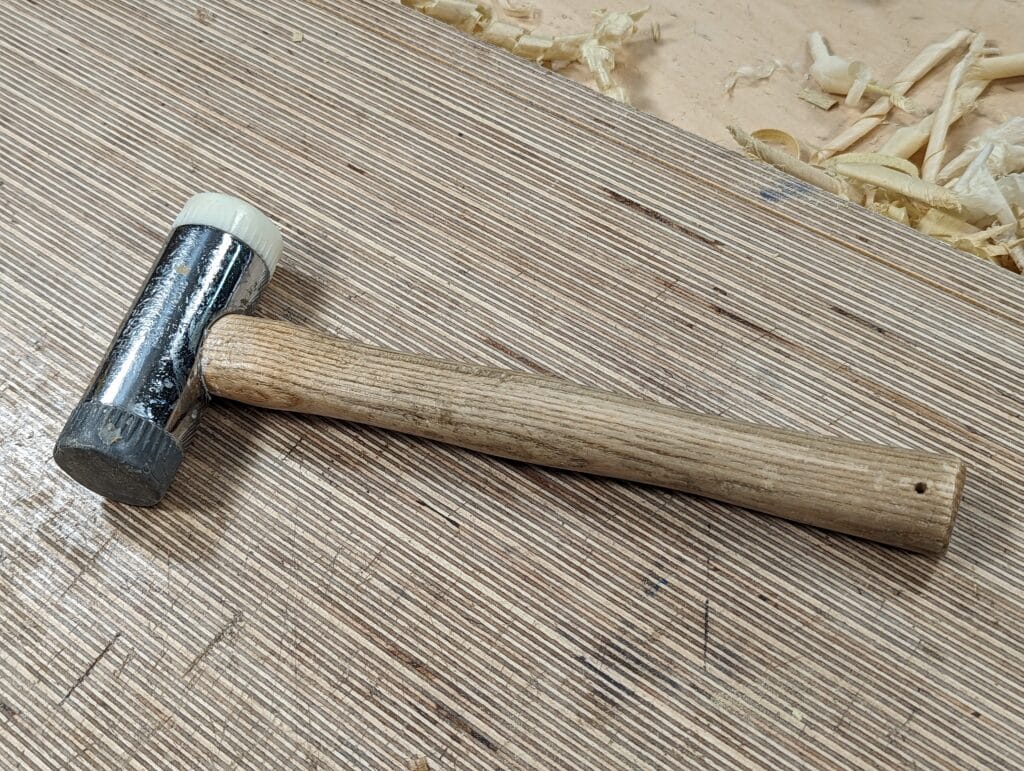
My chisel hammer has set the precedent in malleting work to virtually replace the wooden mallet altogether. For me this tool is unparalleled. It delivers precision along with a direct power a mallet just cannot deliver. Again we are talking under £20 for a very powerful tool. This is the Thor Thorex 712 38mm dia. The best place to get them is eBay it looks like but I would avoid the nylon handle version as the wooden ash one is more comfortable in the hand. We developed a fuller explanation about this hammer and understanding exactly what the centre of percussion is with regards to chisel hammers. In some cultures it’s a no-no to use a steel hammer on a wooden chisel hammer whereas in others they always use a steel hammer to deliver the hammer work. Read me here for a fuller breakdown.
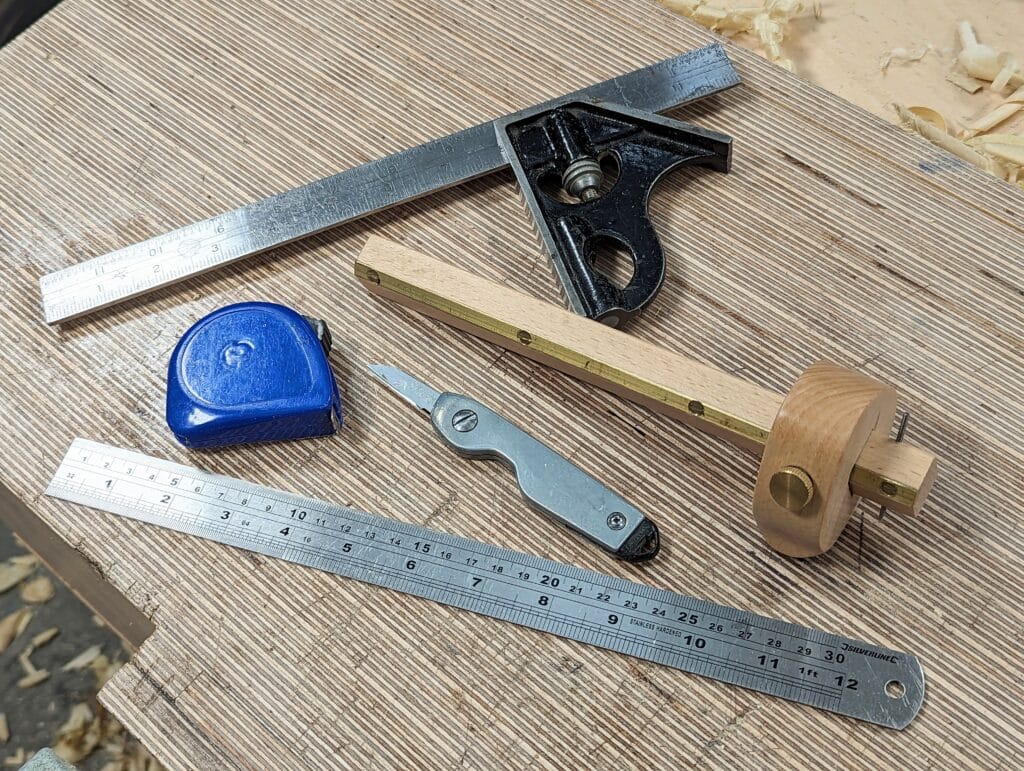
These are the layout tools I mostly used on my latest project the chest of drawers. You can see that apart from the combination square they are inexpensive versions. The £7 Stanley pocket knife, which I resharpen the throwaway blade of for a year or two, is still unsurpassed for creating pristine knifewalls. We put together more information on this specific knife here to learn from. The marking gauge is one of the ones I made and the tape is accurate though it only costs £3.50 and I must have had ten years or more now. I have also used a mortise gauge but forgot to include it in this picture but is in the top one is one I usually buy secondhand because you can get a really decent boxwood or beech version for around £10-15 a pop and you will need a couple of them after a while to avoid resetting a distance you might need to repeat. This blog post from last year will help you in your search and here again in 2017 on common woodworking too.
At the end of the day, We heavily invested in establishing commonwoodworking.com as a free resource tthat’s designed to encapsulate what woodworkers searching for hand skills really need to get seriously started with hand tools. We’ve cut through the frou frou of sales outlets who generally copy and paste from each other and suppliers but rarely if ever actually use the tools except, well, to make money.


Hi Paul
love the post as usual, but don’t seem to be able to see the link for the MHG chisels.
thanks for all your posts.
Joe
I didn’t put a link to them nor the other makers. Not really what I do so as to keep my site clean and advertising free.
thanks for the reply, can use the question as proof reading.
“Here is the link to the ones I have been using in recent years. Look around their site”
thanks again for all the instruction and help getting started with hand tools.
Hi Paul,
I agree with all you say. I have had 40 years in the trade this year, and regularly use my plough plane for grooving, and my 788 for rebating. I much prefer them to a power router which I only use occasionally. I regularly use a router plane , and have done all my working life , and wouldn’t be with out. I also seem to be able to square narrow timber better with a wooden Jack or try plane , than a metal one. Have always cut dogs fails by hand, and have never hung a door with an electric planer.
Hi Paul. Just curious about the little wooden plane in the middle of the picture of all the tools together. What niche does that fill in your day to day work? Many thanks in advance. Jay
That one is a round-both-ways beech plane we made that functions to round (hollow) seats and bowls and also can be used to create coves for cornice moulding to the tops of cabinets, etc.
I made that one two weeks ago -such a pleasure! There are three articles on it here, search the curve-soled plane. …and a video series on WWMC.
Although one can work on a picnic table with a few F-clamps, having a workbench makes a world of difference.
My Paul Sellers-type of workbench was made from recycled wood. The only real expense for the workbench being the quick release vise.
I used inexpensive (90 cm) aluminium sash clamps as recommended by Paul Sellers. I still use them of course.
Then a small place to work. Mine is about 3 X 2 m. Although there is at least one married men/father who used to have a workbench in his living room (search for the blog “literary workshop”)
Don’t forget a broom and dustpan 😉
I work in a 49sq foot resin shed. my space is multi use as well. I have a 52″ long by 18″ wide rolling toolbox with a built in bamboo work top and it works pretty good. most if my work is done with a black and decker workmate bench though. it works awesome for what I do. having an amazingly designed workbench is a big help but not a nessesity.
I love my Stanley 13-030 plough. The one thing that I did was make a wooden handle out of a LVL (Laminated Veneer Lumber, plywood beam material) following the principles of Paul’s video making a bench plane tote made of Yew. The feel of the wood is nicer and given the complex shape the plywood construction avoids any weak short grain issues. The plastic tote is the only shortfall of the plane, and it is 100% feel not function.
Thanks Paul,
I’ve always admired the way you keep your tools well maintained. I’ve a question relating to the Record 044 – is the depth stop missing? I picked one up last year, it came with the depth stop, but the threading for the thumb screw appeared missing. Is theree a way to fix this?
Paul I love this post. A few years ago I was in a more fortunate financial position and purchased a “lot” of heirloom quality tools if you get my drift. Due to a busy work life I never used them, I have since discovered you and had an awakening, realising that the old Stanley tools are just as capable if not more so. So consequently I have been buying them and from you learning how to restore and bring them back to life ( I have so much to learn). The pleasure I find in then using these tools is so rewarding. If I don’t quite get it right the first time I try again. I am now very reluctant to use the heirloom quality tools costing me a few thousand dollars so they are still boxed in a locker, not sure what I will end up doing with them, there is no denying they are a beauty to behold and made by skilled tool makers. Thank you so much Paul for guiding me on my journey.
Kind regards Stephen Penno (Sth Aust).
I think too often we have dismissed the experience of restoration to believe that somehow the heaviness of improved metal engineering and the polishing and fine tuning of metal components can somehow substitute for the lightness of what previously existed for a century and two and more. The lovers of highly engineered metal goods like the all-metal planes truly believe that the their heavyweights far exceed what a wooden or lighter plane can achieve when the exact opposite is true and well proven in many cultures worldwide. I think what modern makers of what you refer to as heirloom tools seem unable to do is give us the lightweights at an affordable price. They seem unable to believe that they lost something and the heirloom part becomes lost alongside the real heroes of pure invention. It was Leonard Bailey inventing the Bailey-pattern bench planes that left us the true heirloom tools but we’ve lost sight of that truism. The modern makers didn’t invent a single thing and nor did they improve anything resulting from our using them.
Hello Paul
Thank you for this blog post. It is so helpful to see that I don’t need a ton of hand tools to get great results. I was wondering if you could tell us when the second edition of Essential Woodworking Hand Tools will be available for purchase.
Kurt
I believe it is available now. Bought mine last year and dive-into it regularly. Great book 😉
Hi Paul
a small question I’d like to ask.. sorry for hijacking your blog..
Could you, or anybody who has one, provide a picture of the cross section of that marking gauge head ?
It’s Stanley 5061 based, if I’m right but I haven’t seen a picture that has the view of the head dead on. I’d like to make one myself and have been gathering parts for it.
I probably could just go freeform to something that fits my hand, I’d just like to know what to shoot for.
Thank you
Diego
This is my own design, Diego, so not a Stanley copy very much though the shape similarly follows the contours of my first finger and them circling it.
Ah, I see
thanks for the reply..
So made to my hand it is then..
Hi Paul. I see you still have your Shinto rasp. I got mine after reading your post about them and it has been a godsend ever since.
Thanks for the tip.
Yes. I have just about taken it to a level of wear I might trade it out for so I do not think it is as economical as my Auriou cabinetmakers rasp as mine still cuts well after twelve years of use. Looking at it, I think it will go for another eight years and of course you get the invaluable benefit of a round rasp which the Shinto does not give us in any way. Furthermore, we are talking £170 for the Auriou as apposed to £20 for the Shinto––two distinct rasps in the Auriou and only really a flat rasp in the Shinto though it has coarse one side and fine the other. So, the Shinto saves me overworking my more expensive Auriou rasp on flat work and that is where my saving is. it is not a question of one or the other for me, it’s definitely a both. It looks as though I would need to buy around eight Shintos for 25 years use of a shinto so I don’t really need to be overly concerned.
Hello Paul. You flag the Aldi and German chisels in comparison with expensive new alternatives. But you don’t give a view on the older English ones that are still widely available – the old Sorby and Marples chisels for example. How do you rate these compared with the newer chisels? My preference is always for the older, but as you indicate, in some instances standards have gone up and the new may surpass much of the old.
It’s the new ones that snapped, though. I know they can be returned and replaced but that doesn’t take care of time and inconvenience issue. Also, I haven’t really found UK versions to be very well finished on the whole but the [rice doesn’t reflect this lower grade of grinding. Of course, the old models are available to us but my audience includes all of the continents and secondhand sellers are not usually that reliable selling outside the UK and I understand why. Send something to Greece and it will take weeks with a price hike on the product surpassing the price twice in Taxes. The EU needs to get its act together on this I think. I once sent a $5 book from the US to Greece and the recipient paid €50 to get it and that took three months although it arrive there within a week pf sending.
I think the UK secondhand market is too limited and I look for suppliers beyond our shores because secondhand suppliers are so reluctant to send their items to mainland Europe because of the regular events of hiking of prices that can take the buying price up many times the actual bought price. I think the EU needs to get its act together on this I once sent a $5 book from the US and by the time the recipient received it is was €50, it arrived in Greece a week after shipping and then at the address three months later damaged.
I agree that buying internationally is a crap shoot. Five years ago I retired to Oaxaca in Southern Mexico. It’s difficult to find tools and supplies I used to easily purchase in the USA. This forces one to ship from the USA at really high prices. I’ll say price gouging by sellers, shipping companies and government import duty is a common practice. So When I visit the USA several times a year I’ll have things shipped to friends and family and I’ll bring them home with my luggage. I used to take for granted the ease of buying supplies in the USA for granted so I can appreciate issues some of what your international followers face.
Paul
some advice please
I have a number of back saws that have between 12 and 17 points per inch.
My problem is finding a saw set to reset the teeth. I have an old Eclipse unit that is good for up to 10 points per inch.
I have contacted a number of suppliers here in Australia looking for a suitable unit
can you please help me.
kind regards
John
john,
this may help you:
https://paulsellers.com/knowledge-base/sawsets/
cheers
Thank you for your guidance. It is very much appreciated.
John
fyi, john pugh – if you type “saw set” into gumtree australia there are at least 5 sawsets which may have the fine anvil available at the moment. (you’d need to ask vendor in most instances for photo of anvil if you dont want to grind it down, but looks like plenty availbale).
see also:
https://paulsellers.com/2011/12/sawsets-old-and-new/ [shows difference in thick vs thin anvil]
https://commonwoodworking.com/buying-a-sawset/ [see samuel’s comment in this blog, which is particularly useful if buying online]
https://paulsellers.com/2014/03/refining-sawsets/ [if going to grind an anvil]
cheers
I’m glad you asked this question here. If there is ever a dumb question it’s the one that isn’t asked. There is nothing dumb about your questioning. The numbers on the anvil wheel are nothing to do with the number of teeth on the saw but purely a point of reference for you to establish a controlled and repeatable bend to the teeth according to your saws. For fine teeth the set would usually be nearer to the minimum set so in that case set the wheel to the highest number. If you look at the wheel you will see that the bevel on the wheel gets wider and thereby deeper even the bevel is the same angle. On a large-toothed saw, such as a 6TPI, the bend will be greater and this then creates a wide kerf in the wood. When might you want a wider kerf? Mostly if the wood is wet or green. In times past woodworkers often had to work with green wood. They would rough cut the wood over-thickness and then sticker it for a year or two to dry. This is now the rarity rather than a common practice as most wood arrives dried down by force drying in kilns. In general I use the higher number setting for all of my saws and rarely if ever more than the number 8 setting which will be barely discernible when you squeeze the saw set. This number 8 setting keeps the kerf setting nice and narrow and it also keeps the saw from wandering too.
Paul – your first pix is more or less what was in grandpa’s tool chest – as a carpenter and quasi-patternmaker, he didn’t have the Record plow, but had a few more panel saws, chisels, and other planes.
It’s a great photo of a starter set of unplugged tools. Personally, I would buy the old tool today and make it work more over than plunk down $250 for a new user KN plane. Being an antique tool collector myself, that’s a whole different story – I’ll save my coin for a beautiful old crown or plow.
Back to simplicity of the kit shown, I like what you’re doing with your blog & education.
I have most of the tools on paul’s table (not the auriou). Cost would certainly have been less than 500 GBP (paid more when got impatient or excited and bought new). For anyone starting out that can learn from my mistakes:
1. Ummm…paul’s advice is good 🙂 . Buy what he says, THEN deviate if needed, rather than the other way round. It’s cheaper and quicker. His tool choices ‘feel’ good, and work well.
2. Most expensive tool I have is a starrett square. I struggled for perhaps 2 years to buy this. In hindsight it is the one tool I wish I’d bought earlier. I bought several cheaper squares, and when things didn’t quite line up I wasn’t sure if it was me or the square. I improved a lot (and enjoyed things a LOT more) once I could reliably measure square. It ‘feels’ good. Get a cast iron head; forged is a waste of money and doesn’t feel as nice. Satin blade easiest to read. Get metric and inch on blade, as will use both, even if think won’t.
3. Veritas gents saw. I think it is 20 or 24TPI. It is a lovely saw… but the teeth look very small for sharpening. I might practice on a hacksaw blade first. As Paul said, get one with less TPI (or maybe veritas will make one with less teeth, hint, hint!?)
4. Love the feel of fettled plane. Took an afternoon. Understood the plane much better after that.
5. I think Star-M 601 drill bits are better than auger drill bits for a newbie, and would humbly suggest if you have to buy wood bits, then get these rather than auger bits. They cut a super clean hole. Don’t split the wood if drilling near an end like a classic auger bit. Work in an auger or electric drill so avoid 2 sets of bits. Can buy individuals, so buy one to try if desired. Priced ok. Widely available, eg workshop heaven in the UK or JTA in oz.
6. A sharpening guide was (and still is) helpful – although a ‘support’ tool rather than core. I don’t think I could have started out properly without this, as initial bevels all over the place.
7. Tin can oiler belongs on that bench. It’s a fave.
8. Lighting – it’s hard to do good work if you can’t see the line… get some way to light the side closest to you, and you can see where to cut. Changed my world.
9. Went 6+ months without a bench and woodwork vise. It’s doable, so just get started … but it’s harder. And more skinned knuckles. Can probably get one free if look around and not ready to build.
hope this helps someone,
Interesting post, thanks. I particularly agree with you points 7 & 8:
7. rag-in-a-can oiler ( I have made 3 now, but mainly use the first one. One other is used for dirtier garden tools, like garden saws and secateurs.)
And 8. lighting. I upgraded my garage so lights to brighter, lower energy LED tubes. Excellent 🙂 And use a scrappy, vintage Anglepoise lamp (garage sale find) with a little LED bulb replacement in my bench window; it helps a bit but there are probably better alternatives available.
I endorse your point about a positionable lamp. I use my daughters first led desk lamp (lovely in pink and chrome😲🥰). I have an extension lead hanging from hooks above my bench just for that. (It’s very helpful for saw sharpening and checking finish.)
Hi Paul,
First of all, it is always a pleasure to read your posts and read about your thought. I do think you’ve missed an important piece of equipment here, one which you probably use more often than others, the sharpening plates. After switching from a regular sharpening stone to the diamond plates I just can’t see myself sharpening my tools any other way.
Cheers
I understand that some might consider the sharpening equipment to be tools but I am afraid I left them out because they are equipment and not tools. I know, some might argue that the rasps and file are abrading tools but these become the extension of an artisan’s hands and therein lies the difference. Hence I would personally only ever use the term machine for woodworking machines and never the term now adopted because it is misleading and in my view quite incorrect anyway.
To say nothing of the fact that Mr. “40 years in the trade” would have run his power router with unnecessary risk of injury from whirling blades and aioli-damaging micro-dust. Live and let live, I say. There’s no changing someone’s mind who doesn’t want to open up to approaches that are different from what they already know. That’s what’s great about the way Paul and other like-minded craftspeople approach the trade: always as a student.
Hi Paul,
A very practical overview of the tools a starting woodworker would need. I fully agree: “You don’t need much and you don’t need to spend too much either”!
Perhaps it is age-related lack of mental acuity in an octogenarian, but there are 3 things that I think are essential that I did not see in you picture:
1) sharpening stones to maintain the edges of chisels and plane blades
2) a saw vice
3) saw sharpening files.
My kit includes most of what you show, missing scrapers, the Auriou rasp (I have Nicholson’s 2), a plough plane, and that Thor hammer. I would also suggest an egg-beater hand drill and bits.
Thanks for this post and all the others that I have benefited so much from, Paul.
Bob, I just answered that as the second person stating the stones should be added but these are not tools but equipment and so too the saw vise or clamp. I might accept the saw files, possibly, but really they are not really furniture making for the Sellers Home series. Bob, thanks for your considerations. I really appreciate it.
Paul, re. your recommendation for a #7 gouge, is that a British #7 sweep or European #7 sweep; I believe they are one sweep different?? Or am I wrong? Or doesn’t it much matter?!
FYI I carve bowls and so I acquired 3 different gouges before coming across your recommendation, I think they are 5, 6 and 8 sweep (typical!) and each made by different companies. One is Pfeil (EU), another Ashley Iles (GB), don’t recall the other.
(But I mainly use my 11+ year old Swedish Hans Karlsson bowl gouge. No sweep number but radius 55cm I think, 35mm wide, possibly more. Beautiful :))
Actually they are 4, 6 and 8 sweep, all fish- tailed flaring “blades”. The 4 & 6 are both about 38mm wide made by Ashley Iles (GB) and the #8 is Pfeil and around, 36mm wide.
Good day Paul,
I am sitting in my garage-workshop reading your latest blog on my cellphone of the day-to-day tools you use and I look around my shop and think of all the tools I acquired over the 30 years I dabbled in woodworking. I have a hand full of premium saws and planes; however, the majority of my hand tools I bought at garage sales and estate sales. My favorite tool to use is my grandfather’s Stanley No. 3 smoother with a Lie-Nielsen iron. Unfortunately, the sale of vintage woodworking tools online rival the costs of some of the premium tool makers. I am glad to learn from you of tools manufactured or made by you that are of premium quality and affordable to many. Keep up the good work.
So encouraging. Thank you for the good work and good word.
Very helpful and informative blog as usual. It was Paul’s videos and blogs that got me going with hand tools some years ago. One very cheap set of tools I use all the time are those little wire gimlets with the auger and lead screw ends and just the wire looped into a handle. They seem much more convenient, quicker and accurate to use than an egg beater and twist drills for small holes, especially for hinges, and once started you can put a longer bar like a 6 in nail or small screwdriver through the handle for extra purchase if needed in the larger sizes.
Interesting. I have 2 or 3 old gimlets but was disappointed with them when I briefly tried them recently to creat a pilot hole for a screw. I ended up using an old bradawl instead.
“Imagine spending £250 pounds on a hand plane when you don’t even know if you will like this way of working wood.”
Although I had the monney, that is also why I procrastinated so long before making my workbench .
(I finally used recycled wood.)
On the other side, it is much more enjoying to work with a workbench, so one should make the workbench jump (which only needs a saw, a plane, a chisel and a square, most people already have a rule, a knife and a drill).
As always, sound and sensible advice from a person of trust. Thank you.
Thanks Paul. Enjoyable and educational post – as always. Within the last few weeks, I’ve added extensions to my bench to raise it to 41″ (I’m slightly taller than you so I went an inch or two higher than your recommendation as I can always trim it down). In doing so, that has resulted in needing to move some of the tools on the peg board (I know not your favorite method) around. This resulted in a shop reorganization which is a bit fun to do. As such, I’ve tried to focus on keeping tools in front of me that I really use often. If there is something I use infrequently, it goes off to side wall. The tools that are left are very similar to what you show in the photo. Somewhat independently of you I have arrived at the same logical conclusion. It doesn’t take many tools to get things done. It certainly doesn’t require premium tools either – little by little I’ve been going to vintage ones as I like their weight and simple honesty. Happy to have supported premium makers like Ron Hock, Lie Nielsen, Kevin Drake but that is only becuase I can afford it. They certainly don’t give a better result.
I have been fortunate to inherit some old tools from my grandfather or even possibly my great-grandfather to enhance my hand tool portfolio. I am currently restoring a Stanley 180 rebate plane. On the horizon is restoring a Stanley 45 plow plane kit in its original box (which needs repair). I have three saws, a rip saw, cross-cut saw and back saw, that all need a degree of restoration or maintenance. One thing is, when I pick them up, whether it is my imagination or reality, I get a feeling of approval that I am using them rather than just admiring them.
I have some new tools too. I don’t have the deep pockets to go off and buy those nice, shiny $300+ hand planes and have settled on some Asian made copies of reasonable quality. With a little tune-up, they work fine.
What I don’t have, and do consider as a tool, is a wood working bench. I built a rather crude work bench of 2″x4″ lumber and a single sheet of MDF. While adequate for some things, I still need a proper wood working bench along the lines of Paul’s benches or even a mash-up of multiple designs.
I am always just more than a little concerned when I read about people lamenting not being able to afford “nice, shiny $300+ hand planes” when a regular plain Stanley #4 and #5 is not second rate to any Asian or domestic knock-off. I wish people could see that hundreds upon hundreds of thousands of highly skilled artisans were masters of the vintage versions that can be had for way under £40 and without any compromise anywhere.
Paul, I will take your admonition with a smile. I have no regrets in not buying those expensive hand tools, and never really desired them. Why buy a Mercedes, BMW or other premium vehicle when a more pedestrian vehicle will more than suffice is really what I was trying to say.
Vintage Stanley hand planes are great tools. I have tried to find them both on eBay and Craig’s List. However, last year when I purchased a Taylor Tool Works #4 which I believe is a copy of a Stanley plane and produced in India, the #4s were running well over $55 U.S. with most much closer to $100 before including shipping and tax. I just looked at eBay and found some #4s that would fit your price range. And I purchased one for $37 inclusive (shipping and tax) that needed a little work on the tote. But, there were some that valued the tools so much that they were over £100 up to £200 at the current exchange rate while not being in good condition.
Bill,
I think you are missing some of what Paul is saying with your car analogy. The old Stanley and a Record #4’s are as good , even BETTER than the so-called premium planes. The Stanely IS the BMW, Mercedes of planes. The premiums I would say are like the heavy american sedans that are “trying” to sell you that because they are large and heavy they have to be better. Yet the #4 Stanley runs circles around them.
hi Paul just need some advice if possible, I have finally finished making the router plane it looks good but don’t let that deceive you I got over confident and took my eye off the ball I made a couple of mistakes first one the cutter is not flush with the upstands face its about a mm to deep and to slack in the dado I have compensated the by putting a thumb screw through the centre of the retaining bar but the second one is the cutter it is not equally in line with the blade adjuster it is about 1-1.5mm out that means the cutter for me is not at 50 degrees my question is Paul leave everything as it is or would you suggest I put a 30 plus degrees honing bevel to compensate for the misalignment.
Just a thought: could you add a smal sliver of wood to compensate for the errors? Perhaps add a wee bit too much and fettle to “perfection” afterwards?
At least you could get rid of the extra thumb screw. There is perhaps a risk of making small dents in the iron from the thumb screw, which means that it will be forced out of desired setting. I’ve seen this on other tools, and it can be really frustrating. The blade supports on my band saw is a grim example.
Dear pAul (or others),
Slightly embarrassed to be asking what seems a dumb question, but haven’t found a good personal answer.
After cleaning and oiling the threads on adjusters (particularly for spokeshave blade), the nuts “unwind” easily on the adjuster threads, during use and the blade setting is lost.
Is there a good way to keep the nuts on the blade adjuster threads “tighter”/less likely to spontaneously come loose?
I know I could slightly damage the thread with a hammer to try to make the nut not run loosely, but… it seems a bit uncouth! (Using lock nuts or two nuts is irritating as very slow to then make adjustments). If there’s a good solution to this would love to hear!
Thankyou,
Paul. I’m not altogether sure why the assembly loosens to come so loose that the adjustment setting is lost but the most likely cause is that you have set the middle retaining screw too far out causing the incline of the lever cap to be at too steep of an angle. Vibration in use and the jarring action of spokeshaving will more readily send the lever cap back up and away from the cutting iron, friction taking the cutting iron with it. Also, this is the primary cause of the whole assembly shaking loose and dismantling itself in use too.
awesome thankyou, i’ll give it a go!
dear paul, hope you’re good.
do the old adjustable mouth spokeshaves have any merit (eg i think stanley 53)? or no real benefit over a well set up stanley 151?
ps – i reckon router plane prices are way down since you brought out your router…!
warm regards